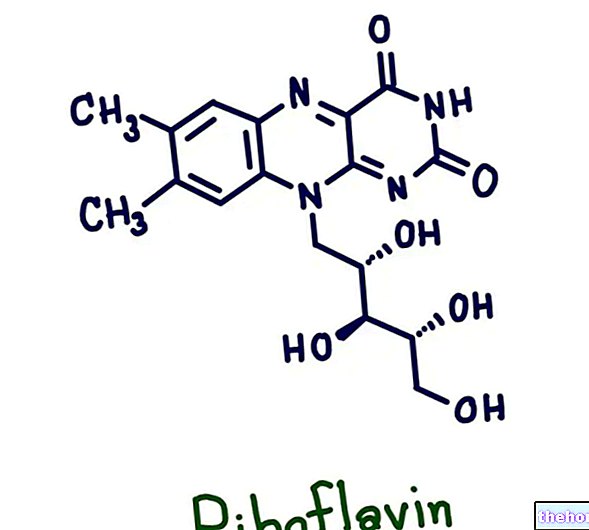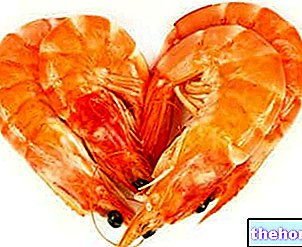Refined carbohydrates are caloric macronutrients, that is, useful for the body to support the physiological mechanisms that require the use of energy; refined carbohydrates are also synonymous with: refined carbon hydrates, refined carbohydrates, refined glycides and refined sugars.

Refined carbohydrates are a group of molecules, simple or complex, obtained thanks to the processing (extracted or hydrolyzed or synthesized) of vegetable raw materials; their production, which requires particular technologies and quite delicate chemical-physical processes, takes place mainly at the level of the food industry.
Refined carbohydrates: what are they?
Let's start by specifying that, contrary to what is often read on the net, the term "carbohydrate" is NOT synonymous with starch, just as the term "sugar" is NOT attributable only to the table one! Carbohydrates, sugars, carbohydrates, glycides and carbon hydrates are SYNONYMOUS and the only distinction can be made by differentiating them into SIMPLE and COMPLEX (approximate distinction that refers to the ease with which they are digested and the speed with which they are metabolized) or, again better, cataloging them in monosaccharides, oligosaccharides (from 2 to 10 molecules of monosaccharides linked together) and polysaccharides (+ 10 molecules of monosaccharides linked together). chemical nature of the molecule with the prevailing food source of belonging, that is: cereals, potatoes, chestnuts and legumes become synonymous with "complex carbohydrates", while table sugar, honey, confectionery foods and (at best ...) fruit replace the term "sugars ". Definitely incorrect!
That said, we try to frame with greater accuracy and precision which are the refined carbohydrates present in the most consumed products.
Simple refined carbohydrates
Sucrose: among the molecules belonging to this category, it is the most widespread in foods handled by man. Sucrose (table sugar) is a simple carbohydrate (very fast to digest and metabolize) formed by a molecule of glucose and one of fructose which ( logically) belongs to the category of disaccharides. Sucrose is also present in foods NOT manufactured by the food industry, including honey, some fruits, etc. However, the presence of sucrose in nature is extremely limited. The fact remains that, to date, sucrose represents an extremely important "slice" of refined carbohydrates since, thanks to its industrial extraction from beet or sugar cane, it has become the most widely used sweetener by man. It has a rather glycemic index. high, which negatively affects insulin release, and significantly increases the risk of dental caries. Also, although it is not certain that what I will expose really affects the metabolism, it is curious to note that: sucrose has a dextrorotatory rotational power, while the equimolecular mixture of glucose + fructose (obtained by hydrolysis of the same) has a left-handed rotatory power, as if it were a synthetic molecule with INNATURAL characteristics (allow me the "irony!).
Fructose: fructose, despite being the simple carbohydrate (monosaccharide) naturally present in nature in fruit, vegetables and honey, is currently extracted from vegetables and sold at retail in crystallized form, mostly as a sweetening substitute for sucrose; obviously it is a "purely commercial idea that has nothing to do with health care. In fact, despite having a glycemic and insulin index lower than glucose and sucrose, in considerable doses (but not out of the ordinary), fructose does not it only stimulates the release of insulin, but is rapidly converted into fatty acids. Moreover, from some in-depth studies it emerged that the abuse of fructose is particularly harmful in the nephrological field and (if consumed regularly) negatively affects the energy metabolism of obese subjects. Fructose could be used intelligently at lower doses than sucrose since it has a power major sweetener.
Glucose: glucose is another member of refined carbohydrates. It is naturally present in monomeric form in foods of plant origin (vegetables and fruit) and polymeric both in foods of plant origin (cereals, legumes and tubers) and in those of animal origin (hepatic and muscle glycogen). D "on the other hand , the synthetic one is frequently used as a sweetener and is a widely consumed food additive, especially in the form of a syrupy hypertonic solution. In particular, the glucose syrup obtained from the hydrolysis of corn starch and subsequent mixing in water, has the highest glycemic and insulin index ever and a relative metabolic impact (if used regularly) nothing short of harmful. It also increases the risk of dental caries and does not have a sweetening power comparable to fructose or even just to sucrose. NB. Despite having a very high glycemic-insulin index, glucose syrup is never taken alone, therefore, it is the glycemic-insulin index of the food containing it, or rather, of the entire meal, is to be considered valid.
Semi-complex refined carbohydrates
Malto-dextrin: maltodextrins, which are naturally present in raw BUT cooked or fermented foods, are produced and marketed above all in the field of food supplements. They are glucose polymers (of various kinds) with a very low sweetening power and a glycemic-insulin index more higher than what one might expect; once it was a commonplace that the speed of entry into the bloodstream was linked exclusively to the complexity of the molecule, in reality, this is only one of the factors to be taken into account! the type of monosaccharide at the base of the polymer, the osmotic power of the mixture and the molecular surface that can be attacked by digestive enzymes (very large in maltodextrins). These refined carbohydrates are ideal for the dietary supplement of cross-country sports with performances that engage the metabolism for more than an hour or in ordinary workouts to ensure ot physical recovery timal; in muscle-building sports, maltodextrins can be exploited for their pro-insulin effect IF taken before or together with a protein food, with the aim of obtaining the greatest possible increase in muscle mass.
Another food supplement similar to maltodextrins is vitargo; read the article: Vitargo.
Complex refined carbohydrates
Starch: complex refined carbohydrates essentially consist of the starch family. The starches are all polymers of glucose but there are various types, which are extractable from various raw materials quite different from each other; starch is therefore a polysaccharide naturally present in: cereals, legumes, tubers (eg potatoes) and some fruits (eg chestnuts). However, there is a certain difference between natural and extracted starch; let's start by specifying that to properly digest a raw food containing starch it is necessary to cook it; in this way, the starch and other molecules undergo a partial hydrolysis which increases their digestibility and with it the glycemic index. The insulin peak is however preventable by eating cereals or potatoes WITHOUT depriving them of the coating, making use of the respective nutritional content in dietary fiber. On the contrary, by using the extracted starch as a refined carbohydrate, it will acquire a speed of digestion and absorption such as to significantly increase the release of insulin compared to that of a raw food (without considering the poverty of the vitamin and salt intake attributable to a refined product such as starch or similarly refined derivative foods). Finally, we specify that starch does NOT have a significant sweetening power like that of the glucose that constitutes it but is still a frequently used food additive, even if it acts as a thickener .
NB. Starches have different digestibility and absorption characteristics that vary according to the structure of the molecule itself.




.jpg)























